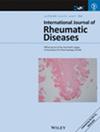Neutralization of IL-17 and CXCR1 Protects Septic Arthritis by Regulating CXCL8-CXCR1 Pathway Along With Functional Activities in Neutrophils
Abstract
Aim
The main objective of this study is to elucidate the role of CXCR1 Ab, IL-17 Ab, and gentamicin in protecting septic arthritis by regulating neutrophil functional responses while evaluating the contribution of the CXCL8-CXCR1 pathway.
Methods
Eighty-four experimental swiss albino mice were utilized to study septic arthritis. They were divided into eight groups. After developing sepsis, respective mice groups were treated with CXCR1 Ab, IL-17 Ab, and gentamicin doses. Doses were administered on days 1, 8, and 13 of the experimental schedule. At the early, middle, and late phases of the experiment i.e. at 3, 10, and 15 DPI (Days Post Infection), mice were sacrificed and blood and tissues were collected for further experimental evaluations. Different functional studies were performed on isolated blood neutrophils, spleen, and synovial tissues. Histological evaluation, immunofluorescence study, sepsis profile, and downstream signaling pathway analysis were done to obtain data.
Results
Infected mice group exhibited high inflammatory responses while treatment helped to mitigate them. IL-17 neutralization helped to lower bacterial burden, neutrophil ROS activity, MPO activity, and ALP activity. However, the combined neutralization of CXCR1 and IL-17 greatly influenced PMN chemotactic activity and lysozyme activity. At the early phase of the experiment, IL-17 neutralization's impact was more prominent, while later, CXCR1 neutralization gained the upper hand.
Conclusions
We can conclude that IL-17 Ab in combination with gentamicin is potent in modulating neutrophil activities positively to cure sepsis, while CXCR1 Ab, through the CXCL8/CXCR1 pathway, regulates neutrophil functional activities by impacting different downstream signaling cascades.

 求助内容:
求助内容: 应助结果提醒方式:
应助结果提醒方式:


